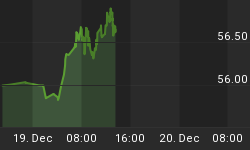In continuing with my rant on investing during inflationary periods (see Reggie's take on investing for inflation Parts I, II, III and IV for the background to this article), I am addressing asset performance during periods of stagflation. My team has identified 2 periods of stagflation (high unemployment rate, low GDP growth and high inflation) in the past 40 years - during December 1973-75 and September 1979-82. Although overall asset class correlation results are similar to those observed earlier during periods of high inflation, with real returns from commercial real estate being the highest amongst all asset classes and agricultural commodities being the most volatile and offering the least protection against inflation, there are some notable difference between periods of pure high inflation and stagflation based on the observed empirical evidence.
- Although equities as an asset class proved to be a sufficient hedge during periods of rising inflation it has underperformed during stagflation yielding negative real returns. Keep this in mind along with my thesis that we are in a cyclical bear market.
- Nearly all the asset classes (except commercial real estate) yielded negative real returns during periods of stagflation suggesting that passive beta strategies during stagflation would not yield and real returns. In other words, you not only have to have your assets actively managed to make enough money to avoid the cost of living from eating into your capital base, the active manager truly must know what he or she is doing. Thus the proliferate and apparently very profitable business of ETFs, mutual funds, hedge funds, mass produced asset management will FAIL to make the average investor money through periods of STAGFLATION! An example of this can be found in the submission of this inflation investment series that I made to a very popular blog aggregating service, which then distributes content to various outlets across the web. It has been filed and categorized under ETF investing, which is ironic, since the findings of my research strongly suggest that it will be very difficult, if not impossible to successfully outrun stagflation through ETF investing. This is particularly true if one were to attempt to capitalize on the use of the one asset class that apparently outperforms during stagflationary times - commercial real estate. This it because many, if not most, of the institutional (and smaller retail) real estate players that sell access to the public have a) taken on imprudent amounts of debt during the bubble which is b) either choking them or c) being deleveraged with highly dilutive equity injections that is significantly reducing gearing at a time when gearing would be most beneficial, and d) most importantly, significantly overpaid for properties during the bubble while simultaneously planning off of highly unrealistic business projections grounded in fantasy land bubble metrics. One will most likely need to either dabble in the class direcly (direct ownership and management of the asset class (definitely not for amateurs), itself) or retain the services of a truly top notch operator that sidestepped the malaise (ex. moi), an apparent minority, the vast majority of which do not sell access to their services through brokerage firms. Just to be clear, I do not offer any investment services to the public, and am not making any solicitations along those lines.
- Since Treasury Inflation-Protected Securities came into existence during 1997 there is not enough empirical evidence to determine its performance during stagflation. However TIPS have outperformed other fixed income securities during periods of high inflation and is the only asset class under the fixed income category with negative correlation with inflation (between yield and inflation). (Subscribers, please refer to sheet "All time periods Fixed Income" in the accompanying Excel Attachment -
 Stagflation Data 2009-06-17 04:00:11 3.02 Mb)
Stagflation Data 2009-06-17 04:00:11 3.02 Mb)
















